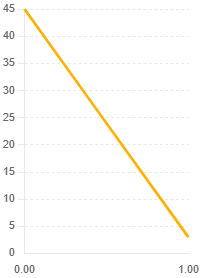Unlocking Personalized Adventure: How Intelligent Matching Created 8x Conversion and 15x Time Saving For End Users
Case Study Overview
In a world saturated with choice, personalization isn’t a luxury, it’s the key to action. Our personalization engine set out to tackle a niche but telling use case: helping outdoor enthusiasts find their next ideal adventure faster and with more relevance.
We partnered and utilized open data sets with leading platforms in outdoor sports discovery, one focused on mountain biking trails and another on climbing routes (we’ll refer to them here as TrailFinder and ClimbQuest for anonymity). Each brought a unique data challenge. Our MVP personalization system transformed their raw, uneven data into curated recommendations that outperformed expectations.
Challenge
Both TrailFinder and ClimbQuest offered deep content libraries, but users were frequently overwhelmed by the volume and inconsistency of data.
TrailFinder (mountain biking and hiking) had rich user histories and reviews but highly unstructured and dirty data. Trail descriptions were incomplete, and metadata on difficulty or location was often missing.
ClimbQuest (climbing) had high-quality grading and geolocation data but lacked user behavioral data, making personalization challenging.
Users across both platforms frequently reported spending extensive time filtering through options to find a trail or route that matched their skill level, preferences, and energy level for the day.
We knew there had to be a better way, so we set out to prove it.
Solution
Our personalization engine combined structured, semi-structured, and unstructured data sources from geolocation and reviews to images and free-text trail descriptions.
Multi-Source Data Fusion
Leveraged TrailFinder’s user-generated reviews and session history to identify behavioral signals.
Used ClimbQuest’s consistent grading systems and geolocation data to anchor objective difficulty and proximity metrics.
Created a unified taxonomy for difficulty, style, and scenery across both platforms.
User Preference Engine
Designed an intuitive slide-scale input for users to define preferred difficulty, energy levels, and location radius, allowing for dynamic, session-based personalization. (Note: Real-time input is not necessary, but it elevates the user’s experience.)
Allowed users to upload images of preferred trail-scapes or vistas. Our model used visual similarity to find comparable scenic routes.
Processed reviews and descriptions with NLP to match tone and sentiment to a user’s preferred style (e.g., “adventurous but safe,” “quiet and scenic”).
Recommendation Output
Each item provides a Curated Description and a Reason Why the item is relevant based on their unique inputs.
Delivered a curated shortlist of 6 highly personalized options, optimized to the user’s unique preferences and past behavior
Provided an additional exploratory set of 75 recommendations segmented into 25 each of easy, medium, and hard options for broader discovery.
Impact
With our personalization engine, that time was reduced to one session and just 3 minutes of searching, an 8x conversion with a 15x improvement in speed and efficiency.
We recruited 50 avid users of TrailFinder and ClimbQuest who already knew the platforms well and often felt frustrated by choice overload. On average, these users previously spent 8 sessions and an average of 45 minutes searching for a suitable trail or climb.
MVP Performance Results
Conversion (User selects trail/route per session)
Baseline: 1 in 8
With NavOut: 8 in 8
Improvement: 8x
Avg Time to Decision
Baseline: 45 minutes
With NavOut: 3 minutes
Improvement: 15x
8x Increase in Conversion per Session: Users were eight times more likely to select a trail or climb during their first session.
15x Time Reduction per Session: Users found a match in an average of 3 minutes over the typical 45 minutes + with the existing platform capabilities.
Why It Matters
This wasn’t just a win for outdoor adventurers, it was a powerful validation of our personalization engine’s ability to:
Handle incomplete, cross-format datasets
Understand human intent and preference
Drive measurable behavior change and action
Whether for outdoor platforms, wellness apps, e-commerce, or B2B services, the principle is the same: personalization isn’t just about relevance; it’s about clarity, confidence, and conversion.
Next Steps
As we prepare to scale, this MVP proves our system can thrive even with disparate data quality. Imagine what’s possible with your purpose-built datasets and long-term behavioral data.
If you’re an investor, partner, or platform looking to personalize at scale, we’re ready to show you what comes next and how we can help customize your solution.



